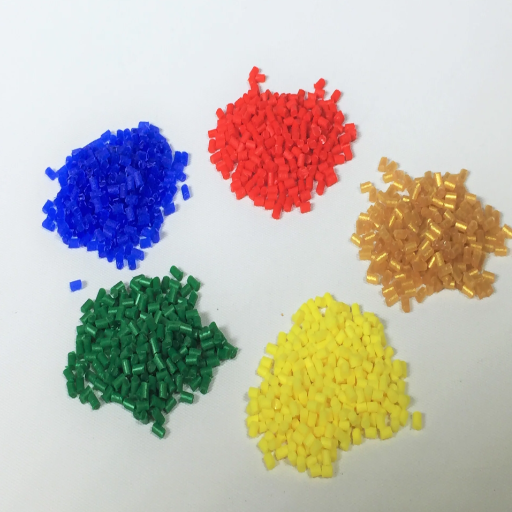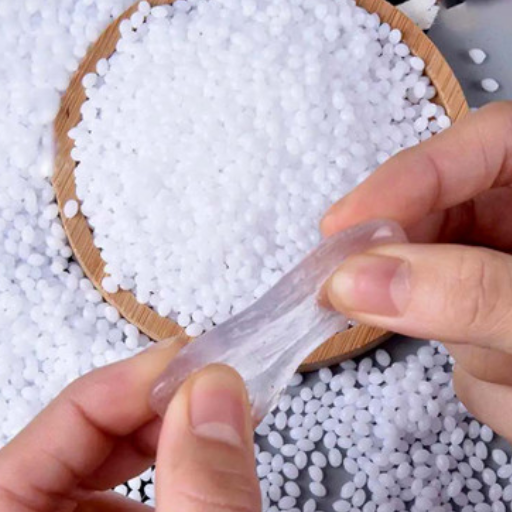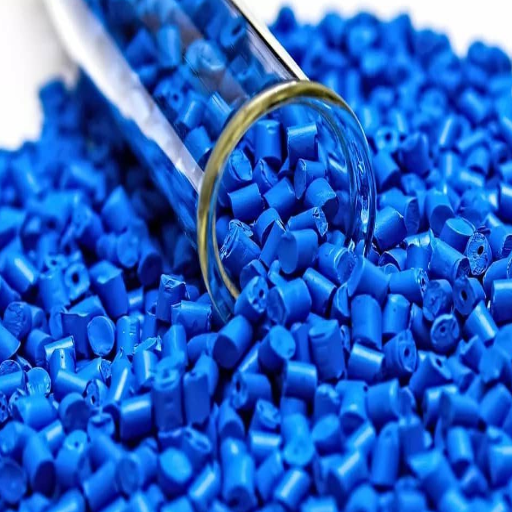Polymethyl methacrylate (PMMA) is a type of resin commonly called acrylic or plexiglass in different shops and places and is a type of synthetic polymer with broad use in many industries plexiglass in various shops and places. PMMA is used instead of glass in many areas such as building construction, automobiles, and even medical implants because it is very fond of being lightweight, resilient, and, most importantly, a transparent material. Nonetheless, due to its life-extending prevalence, there always seem to be questions about whether it is safe or harmful to the ecosystem. Therefore, this article intends to provide insights into PMMA, its unique structural chemistry alongside other functional characteristics, and the necessary precautions to be taken while using the compound. This article is designed to give you a comprehensive perspective on the structure and properties of PMMA, whether you are a practitioner or a layman eager to learn about this common material.
What is PMMA, and how is it made?
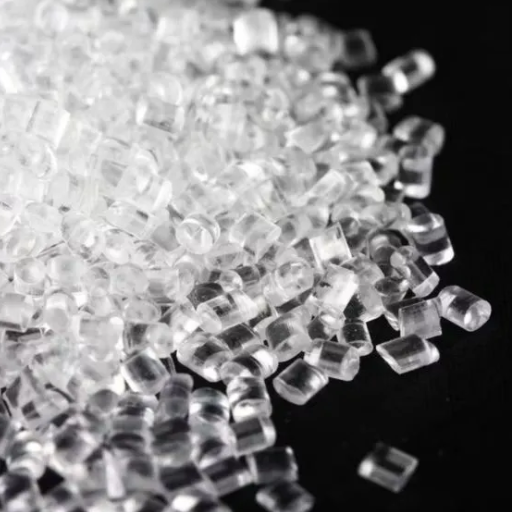
PMMA is a transparent thermoplastic that can easily be shaped and is known for its toughness; however, it can be affected by certain polymerizers due to its composition. Its carbamate structure allows it to belong to the Methacrylate family of such materials. PMMA can be made using monomethyl acrylate, usually polymerized using either anionic or free radical polymerization aided by peroxides or azo compounds. Due to long molecular chains, it has unique properties such as optical transparency, high strength, and UV resistance. The ease of manufacturing and operational feasibility of PMMA allows smooth integration in a variety of industries as well as end usage.
Understanding polymethyl methacrylate composition
A polymerized material made from methyl methacrylate (MMA) monomers is known as polymethyl methacrylate (PMMA) or acrylic. Such a polymer features a consecutive isotope (-COO) in its chain molecular formation, which further gives PMMA the chemical nature of being optically clear and thermally stable. Due to an exceedingly high (105 C) glass transition, PMMA can find applications where requirements of tensile strength and the ability for thermal deformation are required. Other formulations may also contain copolymers within the compositions to alter mechanical properties, improve impact resistance or focus the material for distinctly usable functions. As a result, the organic base structure of PMMA is relatively simple. With some degree of control over the conditions during polymerization, the material has decent performance, is lightweight, and could be cost-efficiently produced.
The manufacturing process of PMMA
Free-radical polymerization is one method of making PMMA, which is short for polymethyl methacrylate. MMA can be synthesized in two basic ways: conventional bulk polymerization or molten mixing at an aggregate level. The bulk method reaches a maximum temperature of 230 degrees Celsius and catalyzes sulfur or other suitable compounds, with equilibrium concentration achieved in two stages; pre-polymerization at lower temperatures produces a syrup with sufficient viscosity, which in the subsequent second stage, rotation of jars in molds that are poly-shaped results into polymerization. This step may involve adding a chemical composition that modifies the polymer; for example, thermoplastics are additives that improve impact resistance more as they increase in quantity. The process controls temperatures and recipes to ensure no compromise of optical clarity and rigidity.
Properties that make PMMA widely used
Polymethyl methacrylate — PMMA — is distinguished by its exceptional light transmission, at least 92 percent, inevitably making comparison with glass impossible. Due to its lightweight characteristics, PMA is nearly fifty percent the density of glass, making it more practical economically and physically when applied, for instance, in construction. It provides elegance and functionality due to its weather-resistant nature, making it durable as it retains its features, life, and properties amidst UV radiation and other environmental factors. Adding to its strong impact, resilience negates concern. It allows for mass molding or thermal shaping of PMMA, promoting its use in numerous medical, automotive, and construction industries.
Is PMMA plastic toxic when used in everyday products?

PMMA plastic is generally considered non-toxic and safe for everyday use. It is kept chemically stable, and no harmful exposure exists under normal conditions. Owing to its biocompatibility, it has also been used in medical applications such as dental and bone cement. However, polymethyl methacrylate monomers can be dangerous before the polymerization process; therefore, caution is necessary during manufacturing.
Safety considerations for PMMA in consumer goods
Polymethyl methacrylate, or PMMA, is noted to be safe for consumer goods applications owing to its stabilized polysaccharide structure,e which is nontoxic and biocompatible. Methyl methacrylate, the raw dry monomer, is more volatile and dangerous because inhaling poses adverse health risks; it is the leading cause of concern during its production process since no inert PMMA is harmful or a reason for alarm. Majorly unstable industrial conditions and practices measures can be in place to cease such exposure. Also, ideal degradable items like household products, acrylic sheets, and eyeglass lenses, which pose little threat, unlike other polar objects or items, to UV radiation, harsh chemicals, and frigid temperatures, are known to decompose small quantities of traces of substance. Hence, disposal and recycling of the above-listed items is critical to enhancing the surroundings of encroachment.
Potential health effects of PMMA exposure
Polymethyl methacrylate, or PMMA, has the reputation of being relatively low-risk with a significant medical or cosmetic application. Some users, however, are at risk from methyl methacrylate (MMA) monomer. Research indicates that short-term MMA inhalation leads to increased irritability in the throat, eyes, and nose and instances of relief of head pain. Long-term inhalation of MMA vapors likely leads to respiratory and skin allergies. Wearing gloves and a face mask can help prevent these instances, although they minimize the risk of such outcomes.
Comparing PMMA to other plastics in terms of toxicity
PMMA, in comparison to other plastics, is considered less harmful. Dioxins are toxic byproducts released when polyvinyl chloride (PVC) is burned or during the production process, this is absent in PMMA altogether. On the other hand, phthalates can be found in various materials due to their use as a softening agent; this is not found in PMMA, which makes it suitable for consumption-sensitive individuals. PMMA does not contain bisphenol A (BPA), which can cause hormonal imbalance, making PMMA an appropriate option if used while consuming food items. A level of hygiene must be observed while using PMMA to ensure proper PMMA usage and minimal reasonable environmental harm.
What are the environmental impacts of PMMA?
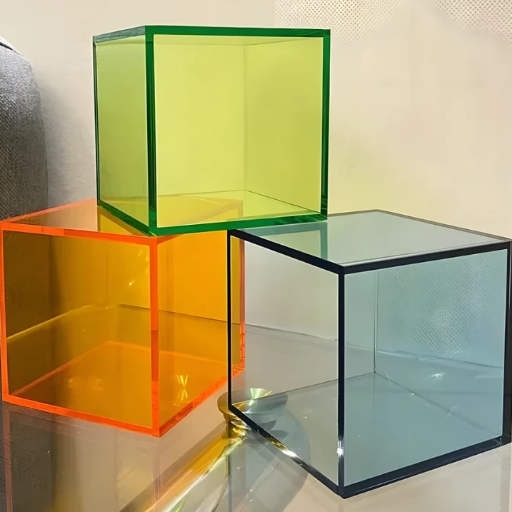
Polymethyl methacrylate, commonly termed PMMA, is a type of plastic characterized as non-biodegradable. Once PMMA materials are formed, they will never be efficiently broken down by natural processes, making the proper disposal of the materials essential. Not adhering to appropriate PMMA disposal measures may result in the materials splintering off into microplastics, drastically increasing pollution levels within the marine ecosystem. The overall impact of PMMA is vast; not only does the disposal and recycling of the material contribute to greenhouse gas emissions, but the production of PMMA requires vast amounts of petrochemical resources. AMPMMA However, there do seem to be challenges when recycling PMMA. Due to low collection and processing rates, rates of reintegrating PMMA materials back into the economy are also low. If the appropriate measures are taken, the pollution generated from using PMMA can be controlled.
PMMA recyclability and disposal methods
Acrylic is a well-known polymer and is more commonly known as polymethyl methacrylate (PMMA). PMMA can be recycled, but unfortunately, the logistical and automated free hurdles of recycling have made it difficult. Fortunately, there are two notable methods of recycling logistically. Mechanically, Polymethyl Methacrylate is pulverized into reusable pellets, although this disperses the quality of the material over the number of cycles it undergoes. PMMA can also be chemically reversed back into its constituent monomer form, methyl methacrylate, which significantly improves the quality of the PMMA obtained. Even though this is a more sustainable technique, it is also more energy-inefficient than manual recycling.
PMMA is often landfilled or, less frequently, incinerated. Such methods of dealing with the material cannot be regarded as environmentally friendly owing to the emissions released through such processes. Improving recycling technology and collection systems is necessary to overcome these weaknesses. This means that efforts to improve the technology of PMMA reclamation and support for chemical recycling will be critical to enhancing the sustainability of PMMA. Moreover, there is a chance to increase eco-efficiency by educating the general public on ways to decrease PMMA-related risks.
Effects of PMMA on Ecosystems
Polymethyl methacrylate, often called PMMA, acts as a non-degradable polymer and has excellent concern for PMMA pollution. PMMA is a thermoplastic polymer that is bad for the surrounding environment because it is not easy to dispose of. If PMMA is thrown away carelessly, it ends up in the natural ecosystem, which is not ideal. PMMA pollution is terrible for the ecosystem because if the PMMA particle is left to rot, it will eventually become microscopic. The degradation of PMMA releases pernicious substances that impact animals and their environment, which is damaging. So, it is advisable to dispose of and recycle PMMA properly; otherwise, it would be detrimental to the waste system management and have dire consequences on the environment.
Sustainable Alternatives to PMMA
After conducting the research, it was noted that sustainable substitutes for PMMA include biomaterials such as polylactic acid (PLA) and polycarbonates made from biomass. These materials provide similar performance in terms of their optical and structural characteristics, but their biodegradability and lower emissions during manufacturing processes also classify them as environmentally friendly materials. Moreover, developing recycling technologies for PMMA itself is another avenue to reduce waste; waste utilization can be achieved with the help of closed-loop recycling systems. These alternatives and better recycling practices can address the environmental issues linked to the orthodox use of PMMA.
How does PMMA perform in different applications?
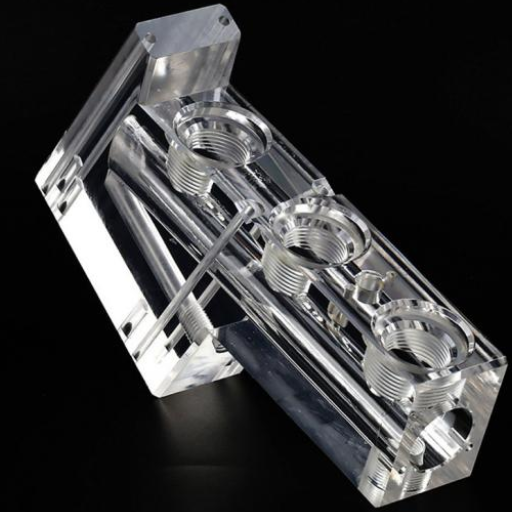
Of note is that PMMA, due to its unique characteristics, has a wide range of applications and performs well in all of them. It would be an effective glazing for buildings, signage, and optical devices since it has a high level of optical clarity, a high degree of transparency, and a relatively high UV resistance. PMMA also has other advantages, which include being lightweight and easy to fabricate, enhancing its application for automotive parts, medical devices, and consumer products. However, the use of automotive glazing could be limited because it is known to have a weaker impact strength than other alternatives like polycarbonate. Regardless, the favorable characteristics surrounding PMMA have made it an important material that can be used across several industries and for multiple applications.
PMMA in medical devices and implants
Acrylate is utilized in several surgical procedures. Its inclusion in bone cement is beneficial in stabilizing orthopedic devices. Additionally, the material is included in intraocular lenses for cataract surgeries due to its high compatibility with eye membranes. It is further assumed that PMMA would work well in cranial implants because it is life-sustaining, solid structural, and light in weight, which speeds up the patient’s recovery. Due to its ideal biocompatibility and all the previously mentioned mechanical characteristics, Polymethylmethacrylate is widely used in medicine. However, PMMA bonds are believed to have weak impact resistance; hence, they should be used cautiously on humans. In general, medicine appears to be the most feasible of PMMA’s alternatives since PMMA seems to have great potential for breakthroughs in medical technology.
Use of PMMA in construction and automotive industries
PMMA or Polymethyl Methacrylate is used in the construction and automotive industries due to its resilience and optical and aesthetic properties. There are applications such as PMMA windows and skylights in construction, which are light but strong and have excellent light transmission and powerful impact resistance. PMMA finds other applications in the automotive industry, as PMMA is used in headlights, taillights, and interior components affected by light. Having such applications only emphasizes the wide range of applications and PMMA’s performance in harsh industrial settings.
PMMA’s role in optical and lighting applications
Because up to 92% of the visible light spectrum can pass through it, and it is lightweight, PMMA is widely used for optical and even lighting applications. The material makes this PMMA lens or even light fixture possible due to its resistance to UV radiation. PMMA technology is industry-ready, as PMMA can be easily manufactured into almost any optical and light industrial shape. PMMA’s optical properties, physical characteristics, and resilience make it the ideal material.
Are there any safety concerns when working with PMMA?
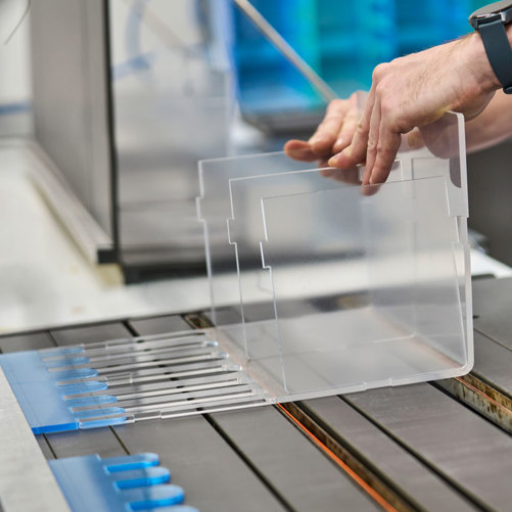
There are safety concerns when working with PMMA. While PMMA is considered non-toxic, it can release potentially harmful fumes, such as methyl methacrylate, during heating, cutting, or machining processes. Proper ventilation should always be ensured to minimize exposure, and protective gear like gloves and safety goggles are recommended to prevent skin and eye irritation. Additionally, PMMA is flammable and should be kept away from open flames or high heat sources to avoid fire hazards.
Handling precautions for PMMA manufacturing
When working with PMMA during manufacturing, I ensure proper ventilation in my workspace to avoid inhaling fumes like methyl methacrylate. I wear protective equipment, including gloves and safety goggles, to safeguard against skin and eye irritation. I keep PMMA from open flames or excessive heat sources to mitigate fire risks and store it in a cool, dry area. Additionally, I follow standard safety protocols during cutting or machining to minimize potential hazards.
Potential risks during PMMA processing
PMMA processing poses several risks, including exposure to toxic fumes like methyl methacrylate during heating or machining, which can cause respiratory and skin irritation. To address this, I ensure adequate ventilation in my workspace and utilize appropriate protective equipment, such as gloves, safety goggles, and face masks. PMMA is also flammable, so I cautiously handle it around heat sources, maintaining strict fire safety measures. Improper disposal or mishandling of PMMA waste can also contribute to environmental hazards, which I mitigate by adhering to proper disposal guidelines and recycling protocols where applicable.
Safety measures for DIY projects using PMMA
When working with PMMA in DIY projects, I prioritize maintaining a well-ventilated area to avoid inhaling fumes, especially during cutting or heating processes. I always wear proper personal protective equipment, including safety goggles, gloves, and a mask, to shield myself from potential chemical exposure and physical injuries. To minimize fire risks, I strictly avoid open flames or heat sources near PMMA, which is highly flammable. Additionally, I ensure responsible disposal of PMMA waste by following local recycling and hazardous material guidelines, reducing the environmental impact while adhering to best practices.
How does PMMA compare to other acrylic materials?
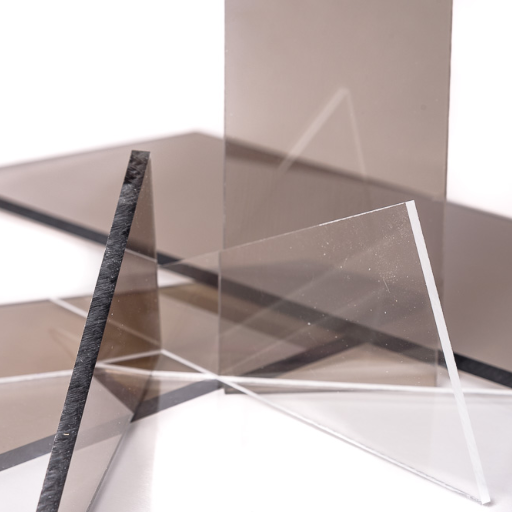
PMMA, or polymethyl methacrylate, stands out among other acrylic materials due to its superior optical clarity, high strength-to-weight ratio, and resistance to UV degradation. PMMA exhibits excellent weatherability, unlike other acrylics, making it ideal for outdoor applications. It also offers better scratch resistance compared to lower-grade acrylic materials, though it is generally less impact-resistant than polycarbonate. While PMMA is more cost-effective than some specialty acrylics, its lower thermal resistance limits its use in high-temperature environments. PMMA provides a balanced performance for various applications, mainly when durability and optical quality are priorities.
Differences between PMMA and other thermoplastics
When comparing PMMA (polymethyl methacrylate) to other thermoplastics like polycarbonate (PC) or polyethylene (PE), it’s clear that each material exhibits unique properties suited to specific applications. PMMA stands out for its superior optical clarity and UV resistance, making it ideal for glazing, signage, and optical devices. Unlike polycarbonate, PMMA offers improved scratch resistance but is more brittle and less impact-resistant. Compared to materials like polyethylene, PMMA is significantly more complex and rigid, although PE often outperforms chemical resistance and impact toughness. Ultimately, PMMA excels in scenarios requiring transparency, rigidity, and weatherability, but it is less suitable where high-impact strength or flexibility is critical.
Advantages of PMMA over traditional glass
PMMA, or acrylic, offers multiple advantages over traditional glass, making it an ideal material for numerous applications. Firstly, PMMA is significantly lighter, weighing approximately half as much as glass, reducing structural loads in construction and transportation. Secondly, it exhibits superior impact resistance; though not as strong as polycarbonate, it is far less likely to shatter than glass, enhancing safety. Additionally, PMMA provides excellent optical clarity with light transmittance of up to 92%, surpassing most standard glass types. It is also more resistant to UV radiation, ensuring long-lasting transparency without yellowing in outdoor conditions. These characteristics position PMMA as a versatile and more durable alternative to traditional glass in settings prioritizing weight, safety, and optical performance.
PMMA grades and their specific applications
PMMA, or polymethyl methacrylate, is available in various grades for specific applications. General-purpose PMMA is commonly used in signage, display windows, and lighting fixtures due to its excellent optical clarity and ease of fabrication. Impact-resistant grades, often modified with rubber additives, are employed in applications where durability is critical, such as protective barriers and automotive components. UV-resistant grades are specifically formulated for outdoor use, making them ideal for external glazing, skylights, and solar panels, as they maintain transparency and resist degradation over time. Each grade is designed to address unique performance requirements, ensuring PMMA’s adaptability across industries.
References
Frequently Asked Questions (FAQ)
Q: What are the key properties of PMMA?
A: PMMA (Polymethyl Methacrylate) is a versatile material known for its excellent optical properties, transparency, and durability. It’s a synthetic polymer with high UV resistance and good mechanical properties, and it is often used as a lightweight alternative to glass. PMMA offers excellent clarity and weather resistance and is known for its impact strength, making it suitable for various applications.
Q: Is PMMA recyclable?
A: Yes, PMMA is recyclable. It can be melted down and reprocessed into new products without significantly losing quality. Recycling PMMA helps conserve resources and reduce waste. However, it’s important to note that not all recycling facilities may accept PMMA, so it’s best to check with local recycling centers for their specific guidelines.
Q: How is PMMA made?
A: PMMA is made by polymerizing methyl methacrylate (MMA) monomer. This process involves linking many MMA molecules together to form long polymer chains. PMMA can be produced through various methods, including bulk polymerization, solution polymerization, and suspension polymerization. The resulting polymer can be formed into sheets, rods, or other shapes for different applications.
Q: What is methyl methacrylate and its role in PMMA?
A: Methyl methacrylate (MMA) is the monomer used to create PMMA. It’s a straightforward, colorless liquid with a distinctive odor. In the production of PMMA, MMA molecules are linked together through a polymerization process to form the long polymer chains that give PMMA its unique properties. Methyl methacrylate is highly biocompatible, contributing to its safety and versatility in various applications.
Q: Why is PMMA also known as acrylic?
A: PMMA is often called acrylic or acrylic glass because it belongs to the family of acrylic plastics. The term “acrylic” is derived from acrylic acid, which is related to the chemical structure of PMMA. This transparent thermoplastic material shares many properties with other acrylic plastics, including clarity, durability, and versatility, which is why it’s commonly known by this more general term in many industries and applications.
Q: What are some typical applications of PMMA?
A: PMMA is widely used in various applications due to its versatile properties. It’s often used to produce contact lenses, optical lenses, and automotive tail lights. PMMA is also used to construct windows, skylights, and architectural features. In the medical field, PMMA is used for bone cement in orthopedic surgery. Other applications include signage, displays, furniture, and various consumer products that require transparency and durability.
Q: Is PMMA safe to use?
A: PMMA is generally considered safe to use in most applications. It’s non-toxic when fully polymerized and doesn’t release harmful substances under normal conditions. Due to its biocompatibility, PMMA is often used in medical applications, including contact lenses and bone cement. However, like any material, it should be used as intended and by relevant safety guidelines. It’s worth noting that while PMMA itself is safe, the monomer (MMA) used in its production can be harmful if not handled adequately during manufacturing.
Q: How does PMMA compare to glass?
A: PMMA, often used as a glass alternative, offers several advantages over traditional glass. It’s much lighter, about half the weight of glass, making it easier to handle and transport. PMMA has better impact resistance than glass, making it less likely to shatter. It also offers excellent optical clarity and UV resistance. However, glass generally has better scratch resistance and can withstand higher temperatures. The choice between PMMA and glass often depends on the application’s requirements.

